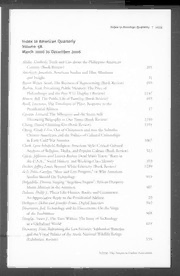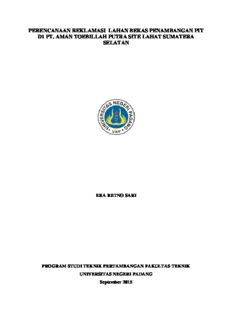
Introduction to Analysis with Complex Numbers PDF
Preview Introduction to Analysis with Complex Numbers
Introduction to Analysis with Complex Numbers Irena Swanson Purdue University Table of Contents Preface 7 The briefest overview, motivation, notation 9 Chapter 1: How we will do mathematics 13 Section 1.1: Statements and proof methods 13 Section 1.2: Statements with quantifiers 25 Section 1.3: More proof methods 28 Section 1.4: Logical negation 32 Section 1.5: Summation 34 Section 1.6: Proofs by (mathematical) induction 36 Section 1.7: Pascal’s triangle 45 Chapter 2: Concepts with which we will do mathematics 49 Section 2.1: Sets 49 Section 2.2: Cartesian product 58 Section 2.3: Relations, equivalence relations 60 Section 2.4: Functions 66 Section 2.5: Binary operations 76 Section 2.6: Fields 83 Section 2.7: Order on sets, ordered fields 87 Section 2.8: What are the integers and the rational numbers? 93 Section 2.9: Increasing and decreasing functions 96 Section 2.10: Absolute values 98 Chapter 3: Construction of the number systems 102 Section 3.1: Inductive sets, a construction of natural numbers 102 Section 3.2: Arithmetic on N0 107 Section 3.3: Order on N0 110 Section 3.4: Cancellation in N0 113 Section 3.5: Construction of Z, arithmetic, and order on Z 114 4 Section 3.6: Construction of the ordered field Q 120 Section 3.7: Construction of the field R of real numbers 125 Section 3.8: Order on R, the Least upper bound theorem 133 Section 3.9: Complex numbers 139 Section 3.10: Functions related to complex numbers 142 Section 3.11: Absolute value in C 144 Section 3.12: Polar coordinates 148 Section 3.13: Topology on the fields of real and complex numbers 153 Section 3.14: The Heine-Borel theorem 158 Chapter 4: Limits of functions 161 Section 4.1: Limit of a function 161 Section 4.2: When a number is not a limit 172 Section 4.3: More on the definition of a limit 176 Section 4.4: Limit theorems 179 Section 4.5: Infinite limits (for real-valued functions) 187 Section 4.6: Limits at infinity 190 Chapter 5: Continuity 193 Section 5.1: Continuous functions 193 Section 5.2: Topology and the Extreme value theorem 198 Section 5.3: Intermediate value theorem 201 Section 5.4: Radical functions 205 Section 5.5: Uniform continuity 210 Chapter 6: Differentiation 214 Section 6.1: Definition of derivatives 214 Section 6.2: Basic properties of derivatives 218 Section 6.3: The Mean value theorem 226 Section 6.4: L’Hoˆpital’s rule 231 Section 6.5: Higher-order derivatives, Taylor polynomials 234 Chapter 7: Integration 239 Section 7.1: Approximating areas 239 Section 7.2: Computing integrals from upper and lower sums 250 Section 7.3: What functions are integrable? 253 Section 7.4: The Fundamental theorem of calculus 258 Section 7.5: Integration of complex-valued functions 265 Section 7.6: Natural logarithm and the exponential functions 266 5 Section 7.7: Applications of integration 272 Chapter 8: Sequences 278 Section 8.1: Introduction to sequences 278 Section 8.2: Convergence of infinite sequences 283 Section 8.3: Divergence of infinite sequences and infinite limits 290 Section 8.4: Convergence theorems via epsilon-N proofs 294 Section 8.5: Convergence theorems via functions 300 Section 8.6: Bounded sequences, monotone sequences, ratio test 303 Section 8.7: Cauchy sequences, completeness of R, C 307 Section 8.8: Subsequences 311 Section 8.9: Liminf, limsup for real-valued sequences 314 Chapter 9: Infinite series and power series 319 Section 9.1: Infinite series 319 Section 9.2: Convergence and divergence theorems for series 323 Section 9.3: Power series 329 Section 9.4: Differentiation of power series 334 Section 9.5: Numerical evaluations of some series 338 Section 9.6: Some technical aspects of power series 340 Section 9.7: Taylor series 344 Chapter 10: Exponential and trigonometric functions 349 Section 10.1: The exponential function 349 Section 10.2: The exponential function, continued 351 Section 10.3: Trigonometry 358 Section 10.4: Examples of L’Hoˆpital’s rule 363 Section 10.5: Trigonometry for the computation of some series 365 Appendix A: Advice on writing mathematics 371 Appendix B: What one should never forget 375 Index 379 Preface These notes were written expressly for Mathematics 112 at Reed College, with first use in the spring of 2013. The title of the course is “Introduction to Analysis”. The prerequisite is calculus. Recently used textbooks have been Steven R. Lay’s “Analysis, With an Introduction to Proof” (Prentice Hall, Inc., Englewood Cliffs, NJ, 1986, 4th edition), and Ray Mayer’s in-house notes “Introduction to Analysis” (2006, available at http://www.reed.edu/~mayer/math112.html/index.html). Ray Mayer’s notes strongly influenced the coverage in this book. In Math 112 at Reed College, students learn to write proofs while at the same time learning about binary operations, orders, fields, ordered fields, complete fields, complex numbers, sequences, and series. We also review limits, continuity, differentiation, and integration. My aim for these notes is to constitute a self-contained book that covers the standardtopicsofacourseinintroductoryanalysis, thathandlescomplex-valuedfunctions, sequences, and series, that has enough examples and exercises, that is rigorous, and is accessible to undergraduates. I maintain two versions of these notes, one in which the natural, rational and real numbers are constructed and the Least upper bound theorem is proved for the ordered field of real numbers, and one version in which the Least upper bound property is assumed for the ordered field of real numbers. You are reading the longer, former version. Chapter 1 is about how we do mathematics: basic logic, proof methods, and Pascal’s triangle for practicing proofs. Chapter 2 introduces foundational concepts: sets, Carte- sian products, relations, functions, binary operations, fields, ordered fields, Archimedean property for the set of real numbers. In Chapters 1 and 2 we assume knowledge of high school mathematics so that we do not practice abstract concepts and methods in a vac- uum. Chapter 3 through Section 3.8 takes a step back: we “forget” most previously learned mathematics, and we use the newly learned abstract tools to construct natural numbers, integers, rational numbers, real numbers, with all the arithmetic and order. I do not teach theseconstructionsingreatdetail; myaimistogiveasenseofthemandtopracticeabstract logical thinking. The remaining sections in Chapter 3 are new material for most students: the field of complex numbers, and some topology. I cover the last section of Chapter 3 very lightly. Subsequent chapters cover standard material for introduction to analysis: limits, continuity, differentiation, integration, sequences, series, ending with the development of the power series ∞ xk, the exponential and the trigonometric functions. Since students k=0 k! have seen limits, continuity, differentiation and integration before, I go through chapters 4 P through 7 quickly. I slow down for sequences and series (the last three chapters). An effort is made throughout to use only what had been proved. For this reason, the chapters on differentiation and integration do not have the usual palette of trigonometric 8 Preface and exponential examples of other books. The final chapter makes up for it and works out much trigonometry in great detail and depth. I acknowledge and thank the support from the Dean of Faculty of Reed College to fund exercise and proofreading support in the summer of 2012 for Maddie Brandt, Munyo Frey-Edwards, and Kelsey Houston-Edwards. I also thank the following people for their valuable feedback: Mark Angeles, Josie Baker, Marcus Bamberger, Anji Bodony, Zachary Campbell, Nick Chaiyachakorn, Safia Chettih, Laura Dallago, Andrew Erlanger, Joel Franklin, Darij Grinberg, Rohr Hautala, Palak Jain, Ya Jiang, Albyn Jones, Wil- low Kelleigh, Mason Kennedy, Christopher Keane, Michael Keppler, Ryan Kobler, Oleks Lushchyk, Molly Maguire, Benjamin Morrison, Samuel Olson, Kyle Ormsby, Ang´elica Os- orno, Shannon Pearson, David Perkinson, Jeremy Rachels, Ezra Schwartz, Jacob Sharkan- sky, Marika Swanberg, Simon Swanson, Matyas Szabo, Ruth Valsquier, Xingyi Wang, Emerson Webb, Livia Xu, Qiaoyu Yang, Dean Young, Eric Zhang, Jialun Zhao, and two anonymous reviewers. If you have further comments or corrections, please send them to irena@purdue.edu. The briefest overview, motivation, notation What are the meanings of the following: 5+6 7 9 · 8 4 − 4/5 √2 4 8 − 1/3 = 0.333... 1 = 3 1/3 = 0.999... · (a b)2 = a2 b2 · · (a+b) (c+d) = ac+ad+bc+bd · (a+b) (a b) = a2 b2 · − − (a+b)2 = a2 +2ab+b2 √a √b = √ab (for which a,b?) · What is going on: √ 4 √ 9 = ( 4)( 9) = √36 = 6, − · − − − √ 4 √ 9 = 2i 3i =p6 − · − · − You know all of the above except possibly the complex numbers in the last two rows, where obviously something went wrong. We will not resolve this last issue until later in the semester, but the point for now is that we do need to reason carefully. The main goal of this class is to learn to reason carefully, rigorously. Since one cannot reason in a vacuum, we will (but of course) be learning a lot of mathematics as well: sets, logic, various number systems, fields, the field of real numbers, the field of complex numbers, sequences, series, some calculus, and that eix = cosx+isinx. We will make it all rigorous, i.e., we will be doing proofs. A proof is a sequence of steps that logically follow from previously accepted knowledge. But no matter what you do, never divide by 0. For further wise advice, turn to Appendix A. 10 The briefest overview, motivation, notation [Notational convention: Text between square brackets in this font and in red color should be read as a possible reasoning going on in the background in your head, and not as part of formal writing.] 1. Exercises with a dagger are invoked later in the text. † *2. Exercises with a star are more difficult.
The list of books you might like

Rich Dad Poor Dad

Believe Me

Shatter Me Complete Collection (Shatter Me; Destroy Me; Unravel Me; Fracture Me; Ignite Me)

Atomic Habits James Clear

DTIC ADA509405: Requirements for the Development of Bacillus Anthracis Spore Reference Materials Used to Test Detection Systems

Sur la taxinomie infragénérique du genre Phragmipedium (Orchidaceae)

Explaining Economic Backwardness: Post-1945 Polish Historians on Eastern Europe

Elizabeth City State University Catalog
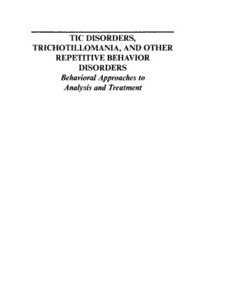
Tic Disorders, Trichotillomania, Other Repet. Behav. Disorders

as vivências travestis e transexuais no espaço dos terreiros de cultos afro

Archives of Disease in Childhood 1993: Vol 69 Table of Contents

New records and host plants of fly-speck fungi from Panama

DTIC ADA550999: Comment on The Two-Capacitor Problem Revisited: A Mechanical Harmonic Oscillator Approach
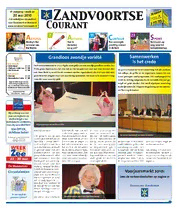
Zandvoortse Courant 2010 week 20

Bezgrješna

Shafer Court connections

analisis laporan keuangan

Identified particle transverse momentum spectra in p+p and d+Au collisions at sqrt{s_NN} = 200 GeV

Calendario attività_programma_regolamento settore Judo Aics 2018
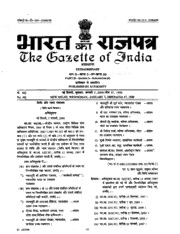
Extraordinary Gazette of India, 2009, No. 118


